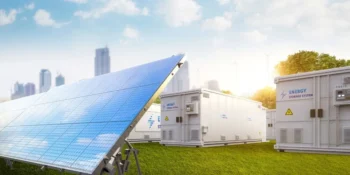The agricultural industry faces unprecedented challenges in a world marked by exponential population growth and the ever-increasing demand for food. Traditional farming practices, though tried and tested, are no longer sufficient to meet the global demand for sustenance. In this era of technological innovation, the solution to the agricultural problem lies in the hands of robots.
Precision Farming and the Future of Agriculture
Agriculture robotics is more than a futuristic concept; it’s a pragmatic response to the agriculture industry’s pressing challenges. With the world’s population growing, we must embrace innovation to ensure food security, reduce environmental harm, and maintain a viable farming workforce. Agriculture robotics, which merges cutting-edge technology with age-old farming practices, is gaining momentum as a potential savior of the agriculture industry. As we stand at the precipice of a food crisis, it’s crucial to recognize the transformative potential of these machines.
One of the most significant contributions of agriculture robotics is precision farming. By utilizing drones and autonomous tractors, farmers can monitor crop health, soil conditions, and pest infestations with unparalleled accuracy. This real-time data allows for precise resource allocation, reducing the need for excessive water, fertilizers, and pesticides. Agriculture robotics enables farmers to work smarter, not harder, resulting in higher yields and reduced environmental impact.
Labor Shortages and Efficiency
Agriculture is notorious for its labor-intensive nature, which has led to a growing shortage of farm workers in many regions—agriculture robotics steps in as a viable solution to this labor crisis. Robots can perform tasks such as planting, harvesting, and weeding with incredible speed and precision. They don’t tire, require breaks, or even demand paychecks. It ensures a steady workforce and significantly boosts efficiency, reducing production costs.
Environmental Sustainability
The environmental ramifications of conventional farming practices are a growing concern. From excessive chemical use to soil erosion, agriculture has left a considerable ecological footprint. Robotics offers a more sustainable path forward. By minimizing the use of chemicals and optimizing resource allocation, agriculture robotics can help mitigate these issues. Additionally, precisely targeting problem areas and reducing waste can lead to healthier ecosystems and reduced pollution.
Challenges and Ethical Considerations
While agriculture robotics holds immense promise, it is not without challenges and ethical considerations. The initial cost of adopting robotics technology can be prohibitive for many small-scale farmers. Additionally, concerns about job displacement need to be addressed, with a potential shift in employment from field labor to robotics maintenance and operation.
There are also ethical questions regarding the control and ownership of agricultural data generated by these machines. Farmers must ensure that they maintain sovereignty over their data, preventing it from falling into the hands of agribusiness giants.
Conclusion
Agriculture robotics promise a more sustainable and productive agricultural future by enhancing precision, reducing environmental impact, and addressing labor shortages. As we move forward, we must balance embracing this technology and ensuring it remains a tool for the betterment of all, from small-scale farmers to global food security. The rise of agriculture robotics is a beacon of hope in an era when innovation is the key to survival.












